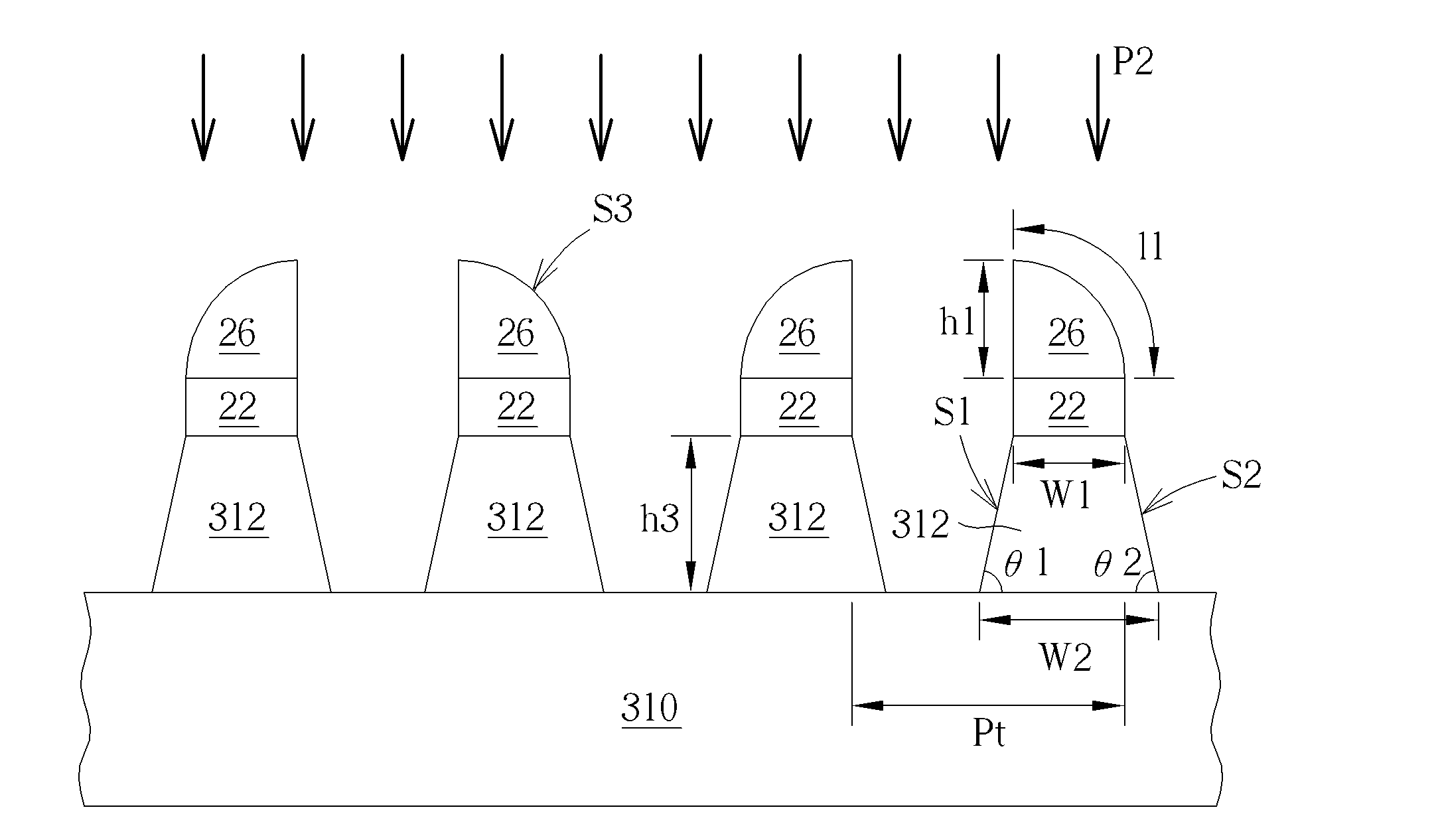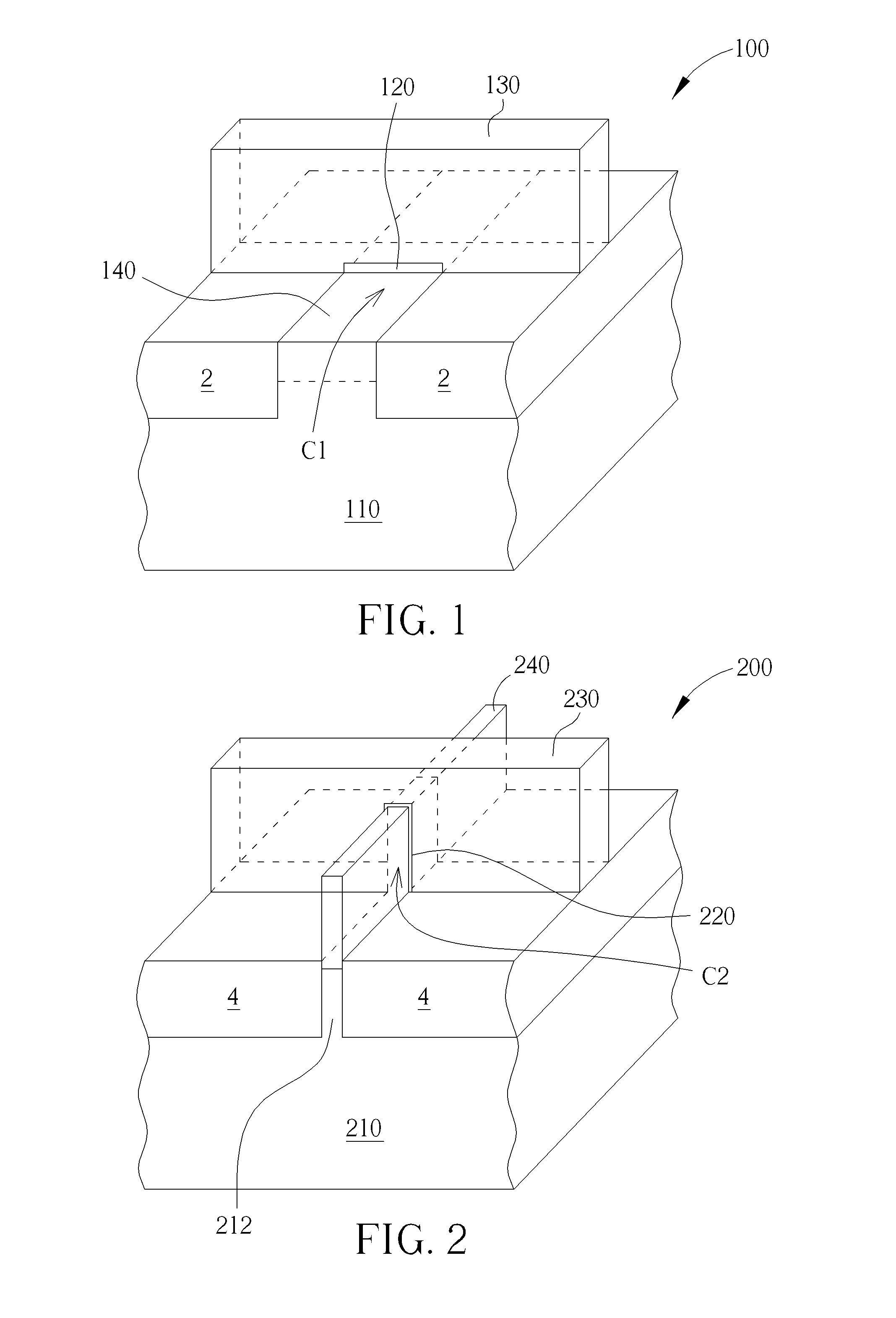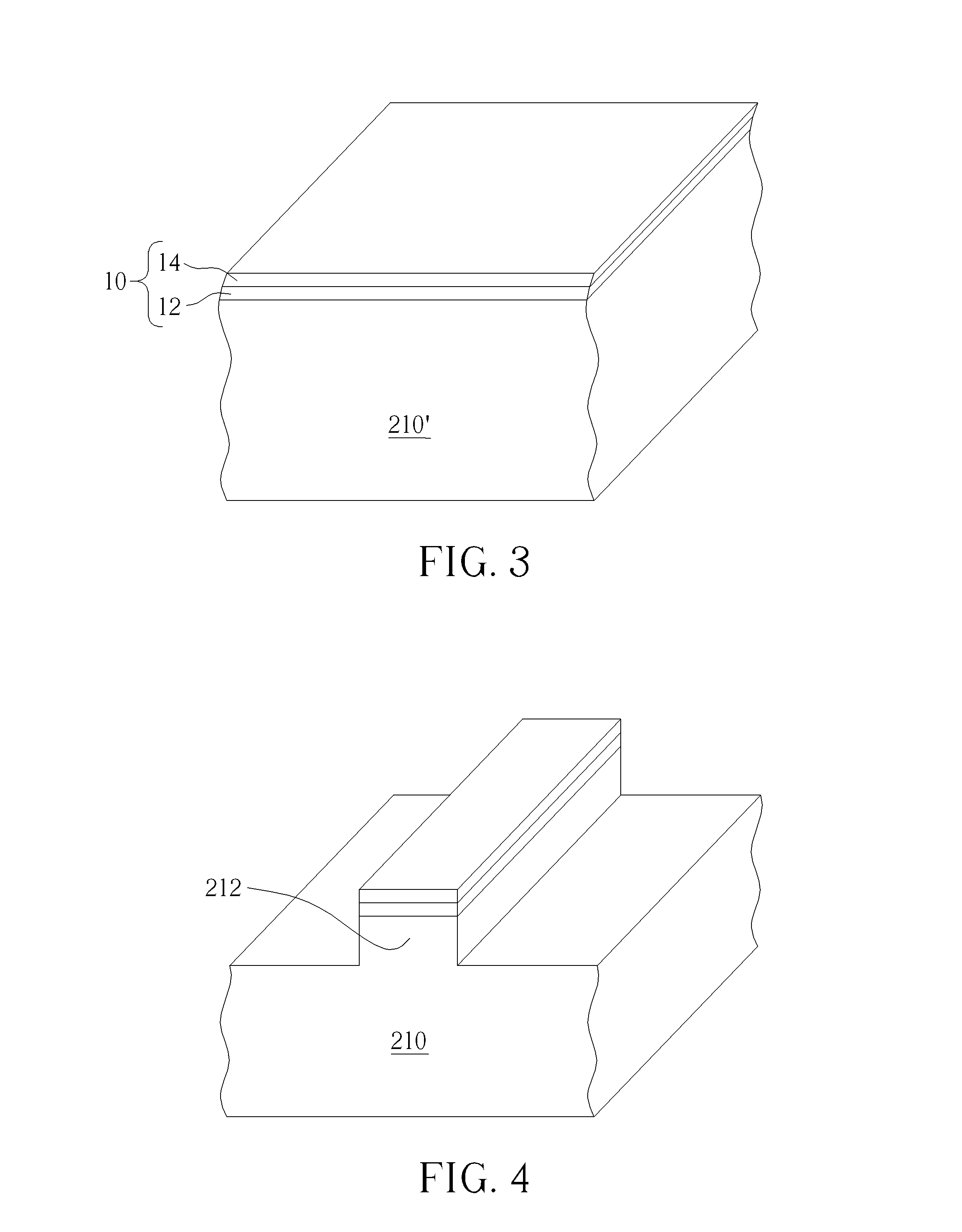Method for forming fin-shaped structure
- Summary
- Abstract
- Description
- Claims
- Application Information
AI Technical Summary
Benefits of technology
Problems solved by technology
Method used
Image
Examples
first embodiment
[0015]FIG. 1 schematically depicts a three-dimensional diagram of a planar transistor according to the present invention. As shown in FIG. 1, a planar transistor 100 includes a substrate 110, at least an isolation structure 2, a gate dielectric layer 120, an electrode 130 and a source / drain region 140. The substrate 110 may be a semiconductor substrate such as a silicon substrate, a silicon containing substrate such as a silicon carbide substrate, a III-V group-on-silicon (such as GaN-on-silicon) substrate, a graphene-on-silicon substrate, a silicon-on-insulator (SOI) substrate or an epitaxial layer containing a substrate such as a P-type substrate with a 2.5 μm P-type epitaxial layer. The isolation structure 2 is located in the substrate 110, wherein the isolation structure 2 is used to isolate each transistor formed on the substrate 110. The isolation structure 2 may be a shallow trench isolation (STI) structure, which may be formed through a shallow trench isolation (STI) process...
second embodiment
[0020]FIG. 2 schematically depicts a three-dimensional diagram of a multi-gate MOSFET according to the present invention. In FIG. 2 one example of a multi-gate MOSFET—a tri-gate MOSFET—is shown. A tri-gate MOSFET 200 may include a substrate 210, a fin-shaped structure 212, at least an isolation structure 4, a gate dielectric layer 220, an electrode 230 and a source / drain region 240.
[0021]The fin-shaped structure 212 is located on the substrate 210. Generally, the fin-shaped structure 212 and the substrate 210 form one piece only, but the fin-shaped structure 212 may be additionally formed on the substrate 210, depending upon the needs. The substrate 210 may be a semiconductor substrate such as a silicon substrate, a silicon containing substrate such as a silicon carbide substrate, a III-V group-on-silicon (such as GaN-on-silicon) substrate, a graphene-on-silicon substrate, a silicon-on-insulator (SOI) substrate or an epitaxial layer containing substrate such as a P-type substrate wi...
third embodiment
[0032]FIGS. 5-10 schematically depict cross-sectional views of a method for forming a fin-shaped structure according to the present invention. As shown in FIG. 5, a substrate 310 is provided, wherein the substrate 310 may be a semiconductor substrate such as a silicon substrate, a silicon containing substrate such as a silicon carbide substrate, a III-V group-on-silicon (such as GaN-on-silicon) substrate, a graphene-on-silicon substrate, a silicon-on-insulator (SOI) substrate or an epitaxial layer containing substrate such as a P-type substrate with a 2.5 μm P-type epitaxial layer. A pad layer 22 is formed on the substrate 310, wherein the pad layer 22 may include an oxide layer, but it is not limited thereto. A sacrificial pattern material 24′ is formed to entirely cover the pad layer 22. As shown in FIG. 6, the sacrificial pattern material 24′ is patterned to form a sacrificial pattern 24. In this embodiment, the sacrificial pattern material 24′ is polysilicon, and the sacrificial...
PUM
 Login to View More
Login to View More Abstract
Description
Claims
Application Information
 Login to View More
Login to View More - R&D
- Intellectual Property
- Life Sciences
- Materials
- Tech Scout
- Unparalleled Data Quality
- Higher Quality Content
- 60% Fewer Hallucinations
Browse by: Latest US Patents, China's latest patents, Technical Efficacy Thesaurus, Application Domain, Technology Topic, Popular Technical Reports.
© 2025 PatSnap. All rights reserved.Legal|Privacy policy|Modern Slavery Act Transparency Statement|Sitemap|About US| Contact US: help@patsnap.com



